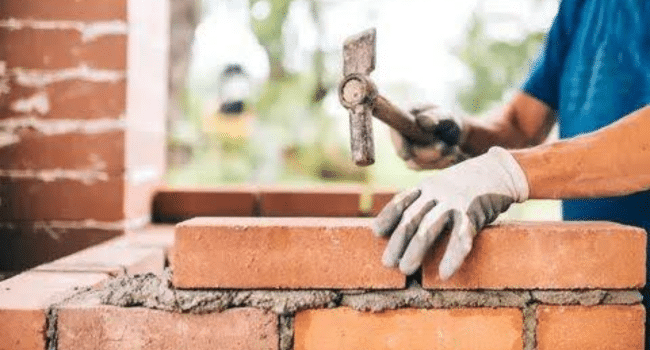Table of Contents
Los Angeles, a major metropolis in the US state of California, is renowned worldwide for its diversity, cultural richness, and architecture. The buildings here are not just places to live but are living proof of the city’s history, growth, and technological advancement. Much of this development has been made possible through the skilled work of Masons in Los Angeles, whose expertise in stone, brick, and concrete masonry continues to shape the cities unique and enduring architectural landscape.
This blog will delve deep into the history of masonry work in Los Angeles and its evolution – how the craft completed its journey from traditional methods to modern techniques.
Masonry: An Art and Science
Masonry is not just a work of joining stones or bricks, but it is a dedicated art that incorporates beauty, strength, and durability.
The importance of masonry lies in the fact that it provides durability to the construction, protects it from the vagaries of climate, and makes the design beautiful. The use of this art can be seen in every corner of Los Angeles — whether it’s historic mission churches or modern skyscrapers.
Early days of Los Angeles: Mud brick buildings
When Spanish missionaries came to the Los Angeles area in the 18th century, they used adobe bricks and local stone. These buildings were lightweight but strong, and were specifically designed for the local climate.
The beauty of Spanish missionary architecture, which included rounded arches, thick walls, and intricate eaves, can still be seen in many parts of the city. This was a period when traditional masonry methods and materials were evolving to suit local resources.
Late 19th and early 20th centuries: Change with industrialization
In the late 19th century, Los Angeles experienced rapid industrial and urban growth. The railway network expanded, and numerous residential and commercial projects were launched.
During this period, the use of modern building materials such as cement and concrete began to increase. Concrete increased the strength of buildings and helped them withstand weather and earthquakes.
Masonry work also began to be integrated with machinery, making construction faster and more precise. Buildings from this era showcased a unique blend of traditional craftsmanship and emerging modern techniques.
Cultural Diversity and Influences on Masonry
Los Angeles is a cultural melting pot, home to many diverse communities. The influence of this cultural diversity is reflected in masonry designs and techniques.
Colorful, vibrant, and artistic designs from Mexican culture are combined with architectural styles from Chinese, Korean, and other communities. This blend makes masonry more than just a technical job — it becomes a cultural storyteller that tells the story of each building.
Contemporary Masonry: Technique, Durability, and Design
Masonry work in today’s Los Angeles is done with cutting-edge techniques and high-quality materials. Traditional brick and stone remain popular, but there is now a growing use of precast concrete, fiber-reinforced composites, and environmentally friendly materials.
Also, modern equipment such as laser measurements, automated block cutters, and drone surveys has brought precision and speed to the work. This not only speeds up construction, but also increases the safety and stability of structures.
Earthquake-safety and climate-friendly techniques
Los Angeles is in an earthquake-prone area, so incorporating earthquake-resistant techniques in masonry work is extremely important. Because of this, today’s masons not only have to be proficient in the traditional art, but also have to follow the latest earthquake safety standards.
Masonry materials are also chosen depending on the climate so that structures are protected from sea breeze, sun, and rain. The growing demand for waterproof and thermal insulation materials has further advanced the field of masonry.
Social and Economic Importance of Masonry
Masonry not only enriches the architecture of Los Angeles, it is also a major source of employment. Thousands of local artisans, designers, and engineers are involved in this field.
Good masonry work also increases the value of property. Strong and beautiful masonry in homes or commercial buildings always makes the investment secure.
Towards the Future: Innovation and Sustainability
In the future, masonry work in Los Angeles will have more emphasis on smart technology, robotics, and environmental sustainability. A new era of masonry is coming with sustainable building materials and energy-efficient design.
This will include 3D printed concrete blocks, recycled materials, and energy-saving construction solutions that are not only better for the environment but also cost-efficient.
Conclusion
The history of masonry work in Los Angeles is a rich and diverse journey, spanning from traditional clay bricks to today’s advanced concrete structures. This history is not only a witness to technological advancements but also tells the story of social and cultural changes.
The buildings of Los Angeles are a testament to how the art of masonry has adapted, evolved, and moved into the future over time. Whether it’s a historic church or a modern high-rise, the contribution of every skilled Mason in Los Angeles is deeply embedded in the city’s architectural identity.
A knowledgeable Mason in Los Angeles can bring both tradition and innovation to your project. This is the story of masonry — the combination of durability, beauty, and technology that gives Los Angeles its unique character.
